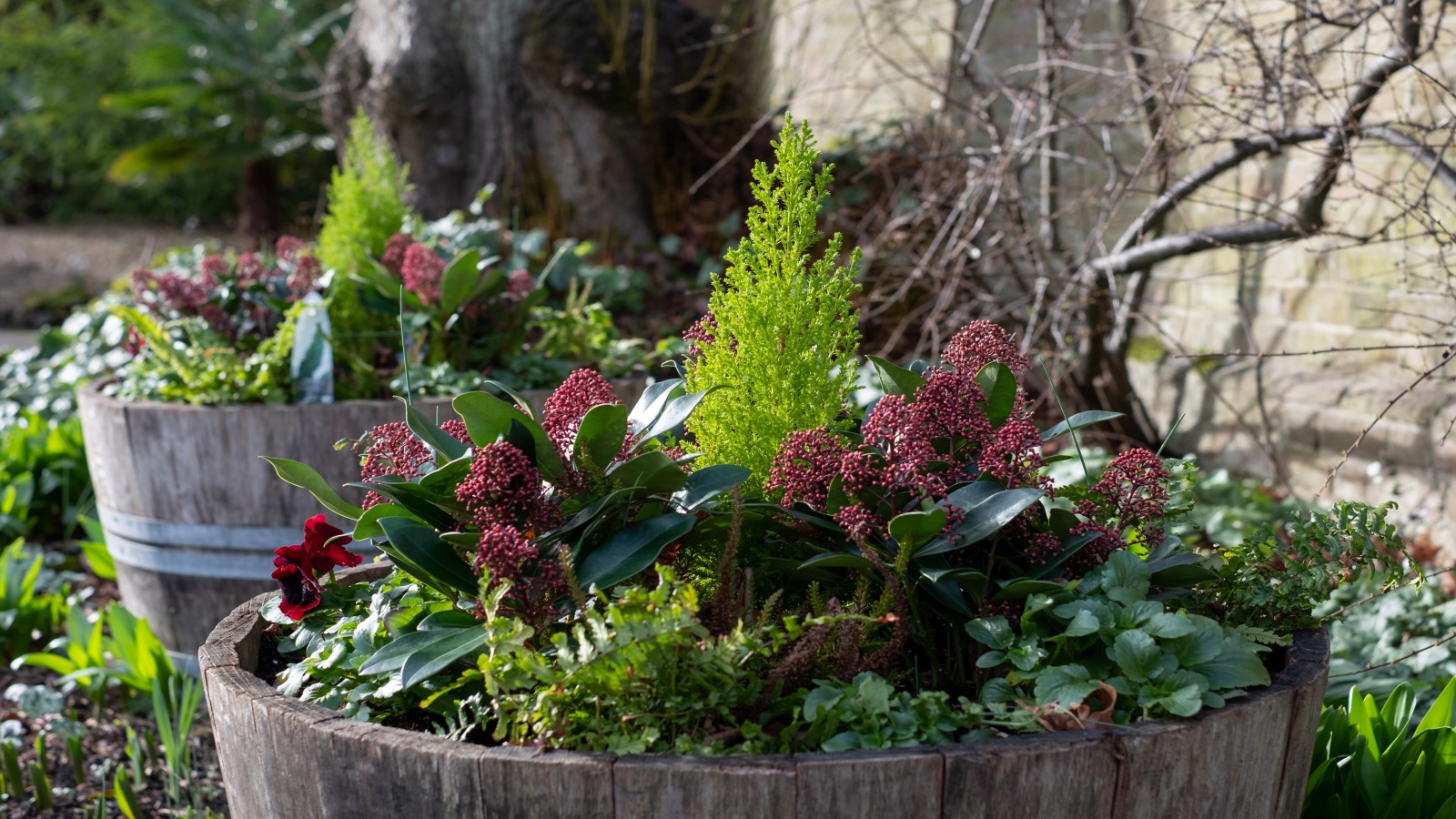
Amid the vast array of winter plants for pots and borders, there are probably more flowering plants for adding color and interest than you might first think.
From scented flowering shrubs to more traditional bedding plants, you can create your own collection of colors and textures to illuminate the shortest days, so don't be fooled into thinking your summer pots get all the best flowers.
Whether you are thinking about making a statement with a single berry-jewelled shrub, or looking forward to playing with a pick and mix of brilliant blooms to create an individual palette, when you come to plant a winter container you certainly won’t be short on choice.
1. Pansies and violas
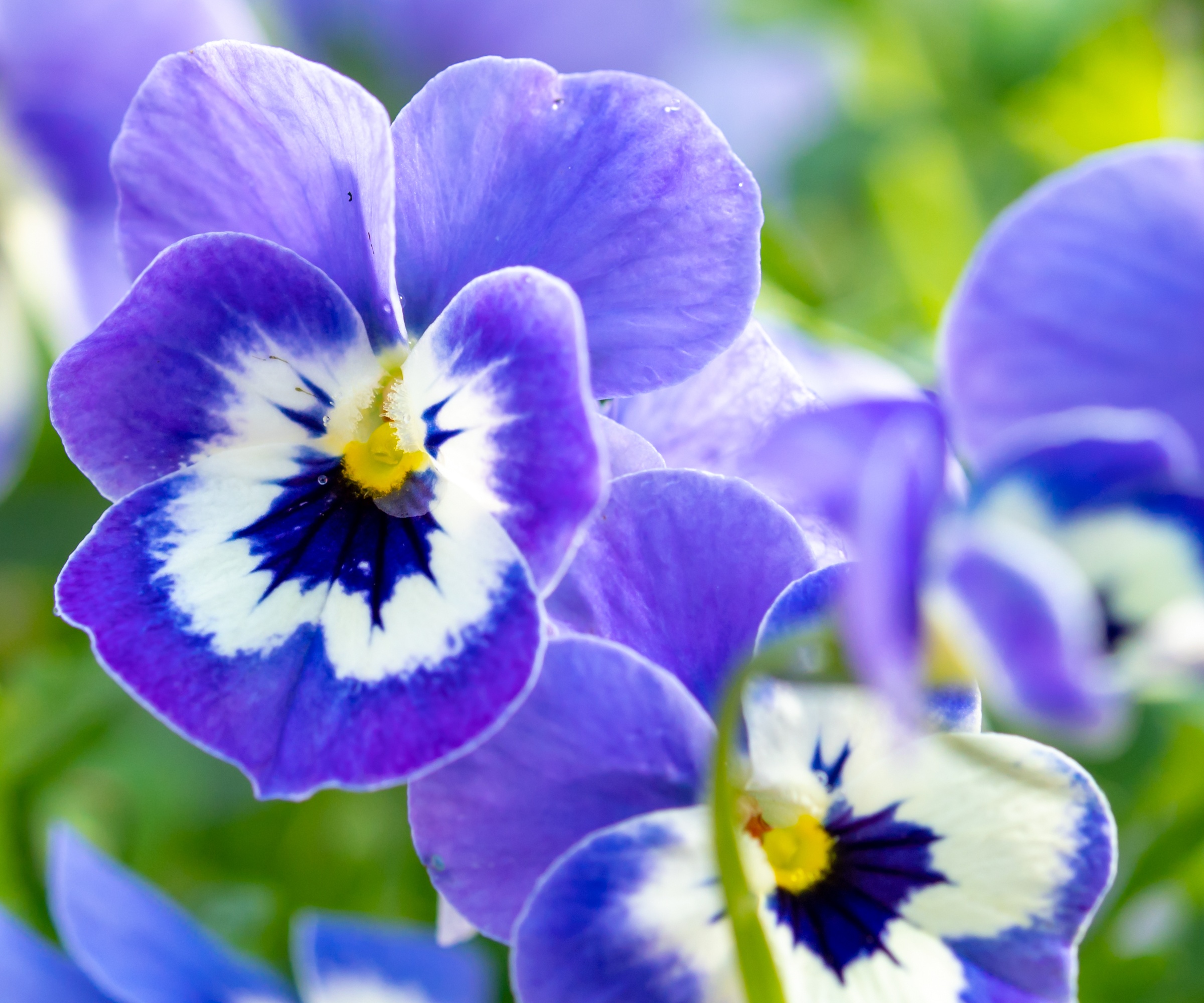
Easy-going, varied, long-lasting and easy to propagate, pansies and violas are guaranteed to give you a cheerful display of flowers through the colder months.
Choose ones labelled as 'winter-flowering' to guarantee they will thrive in colder weather. They are low-maintenance and their main requirements are regular deadheading, and keeping their compost damp, not soggy, during dry spells as they will turn up their toes if they dry out.
Pansies are hardy in US hardiness zone 6 to zone 10.
2. Heather

Winter heather is a long-flowering, robust plant that not only forms attractive, colorful mounds in shades of pink and white, but also provides vital nectar for the earliest pollinators that emerge after winter.
Most heather needs acidic growing conditions, so use ericaceous potting soil in your containers. Erica carnea varieties, such as the ‘Springwood Pink’, however, will thrive in more neutral soils so can handle a mix of multipurpose and ericaceous composts.
It's suitable for zones 7 to 9 and able to withstand freezing temperatures.
3. Sweet box

We have a pot of sweet box (Sarcococca confusa) next to our front door and through the winter months it wafts glorious waves of the sweetest, most uplifting scent as we pass from the blossom-like flowers.
As well as being one of the best winter flowers for scent, sweet box is ideally suited for containers when planted in nutrient-rich potting soil that isn’t allowed to completely dry out.
It produces a mass of small, delicate, white flowers on glossy evergreen leaves in the winter, followed by black berries over summer. Sweet box is easy to look after, and doesn’t need pruning other than the removal of dead shoots. It is hardy in zones 6-9.
4. Spring bulbs

Spring bulbs grow very well in pots and will give the late winter, early spring garden a much-needed color boost. There are also many fragrant bulbs to plant in the fall for early-year scent.
For the best results make sure you add grit or perlite to the potting soil to improve drainage as bulbs are prone to rotting if they sit in wet conditions.
You could experiment with a bulb lasagna, and layer different sized bulbs such as tulips, daffodils, Iris reticulata and anemones in the same pot to create an extended flowering period.
Most spring bulbs are hardy in zone 3, zone 4, zone 5, and zones 6-8.
5. Skimmia japonica

Japanese skimmia (Skimmia japonica) not only one of the best shrubs for containers, it thrives in partial shade so is the perfect shrub to light up darker areas of the yard.
It has tidy, evergreen foliage and will produce cones of white flowers followed by brilliant red berries in winter. If you opt for skimmia, make sure you pair male and female plants to ensure you get berries.
Suitable for hardiness zones 7-9.
6. Daphne

If you are looking for gorgeous scent and sweet flowers, daphne is the shrub for you.
These attractive shrubs produce white to light pink tubular flowers in spring or early winter in warm climates, followed by small red berries.
Winter-flowering varieties that are suitable for containers include Daphne odora, which grows to 4ft tall and produces deeply fragrant flowers in late winter and early spring (hardy in zones zones 7-9), and February daphne (D. mezereum) that reaches 5ft and gives scented pink flowers between February and March (zones 4-7).
7. Hardy cyclamen
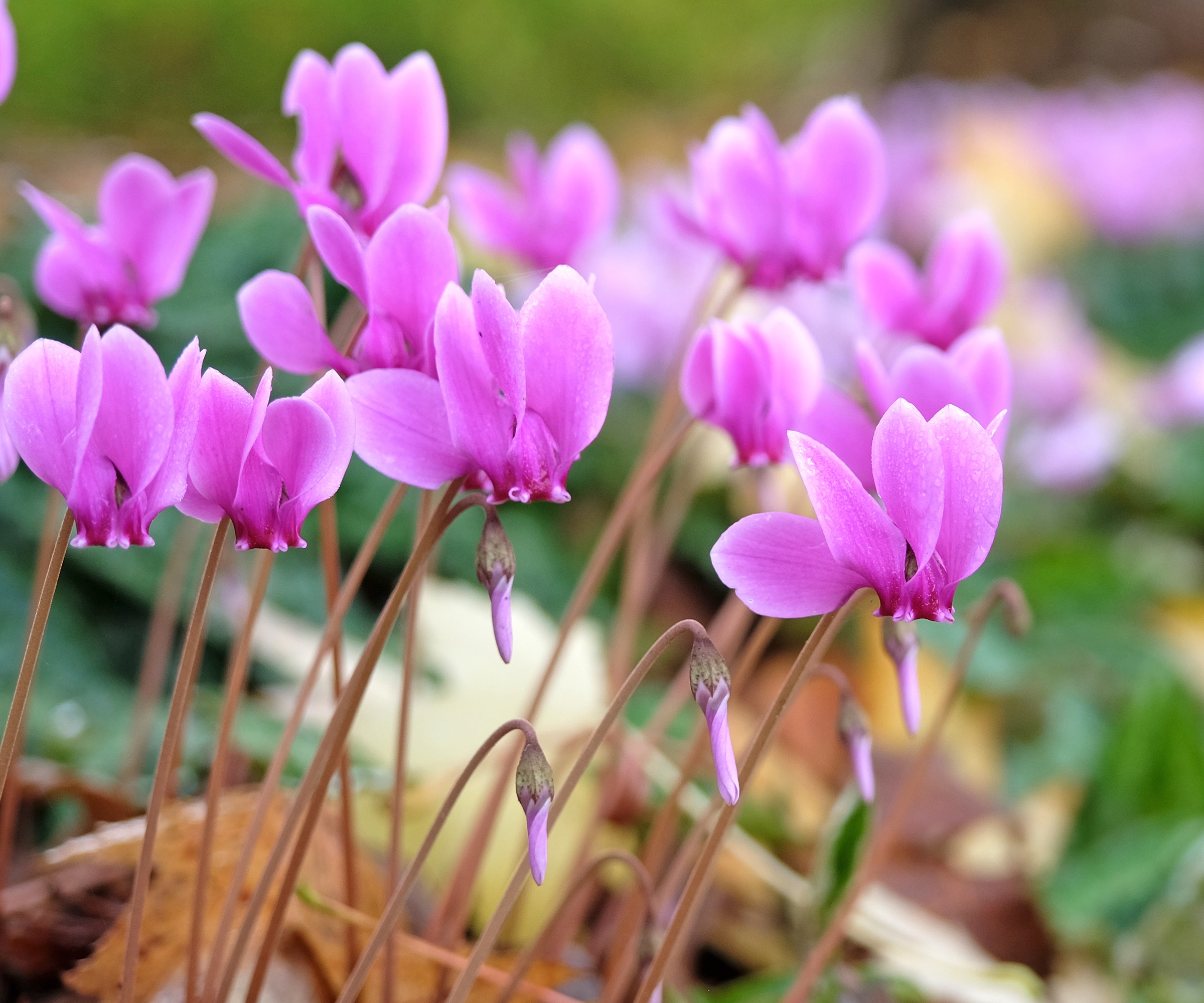
Sweet little cyclamen are my go-to plant for winter pots. There are lots of types of cyclamen to choose from but I always double-check to make sure I buy the winter-hardy varieties Cyclamen coum or Cyclamen hederifolium.
Plant them at the same depth as the pots you buy them in and avoid letting the containers become waterlogged, as this will damage the roots.
Although the corms and roots start small, they can grow to the size of dinner plates, so your plants may need dividing after a few years to keep them productive and colorful.
Cyclamen coum is hardy in zones 5-9, C. hederifolium in zones 4-8.
8. Wintergreen
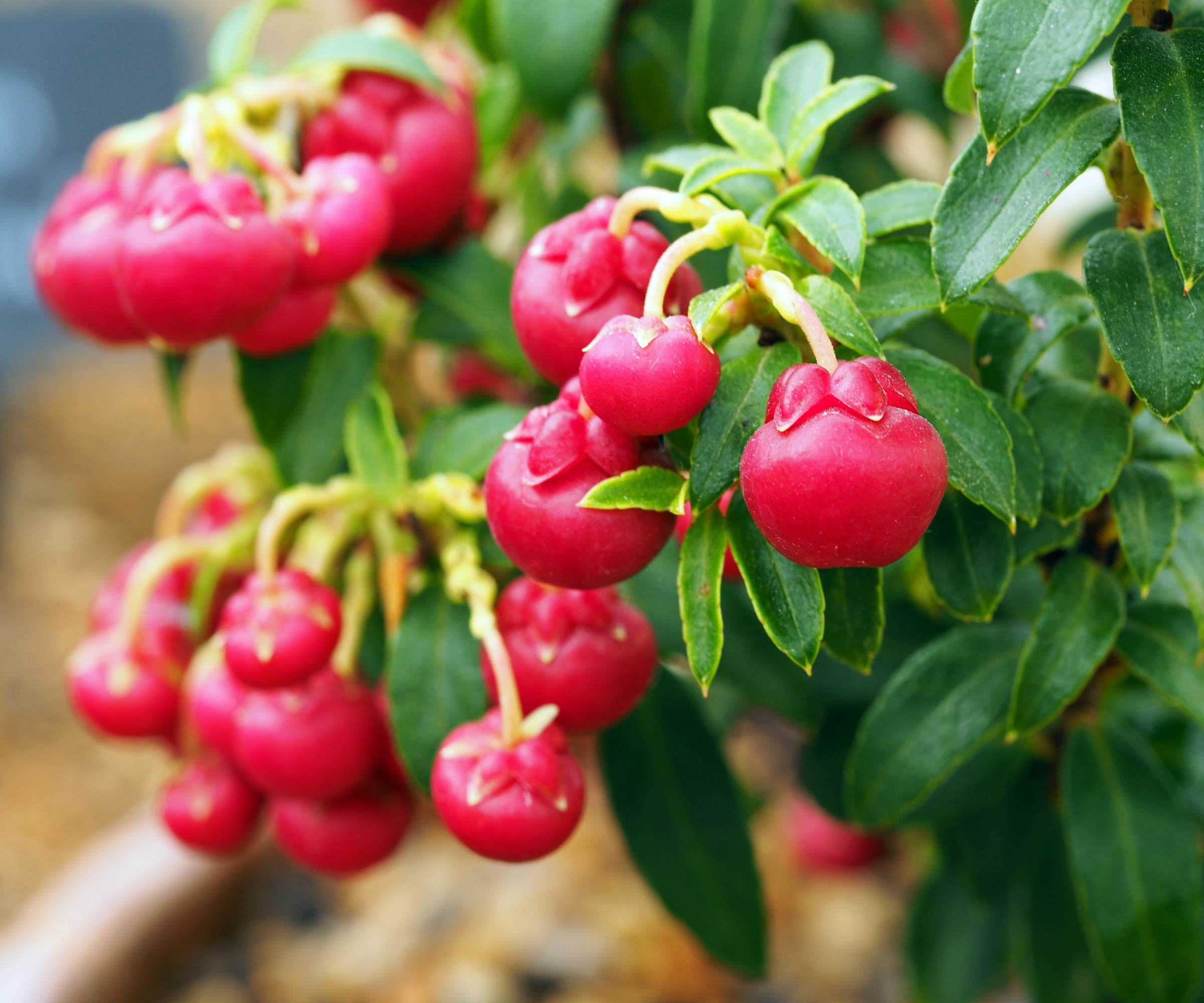
Low-growing wintergreen (Gaultheria procumbens) is one of the best shrubs with winter berries, and is happy when grown in pots.
Also known as checkerberry, this ground-hugging evergreen plant also works well in baskets and can then be transferred to a shady area of the yard to provide groundcover.
It has small white flowers that are followed by scarlet berries and its aromatic, tough leaves turn attractively red in winter. Be sure to always wear gloves when handling these plants, as they can irritate skin.
Gaultheria procumbens is hardy in zones 3-8.
9. Camellias

There are many types of camellia and they are a bright and beautiful addition to the potted garden, their glossy flowers appearing from the fall right through to spring in shades of pink, red and white, a wonderful contrast to their evergreen foliage.
They're ideal for growing in pots, but make sure you use ericaceous potting soil and water them with harvested rainwater rather than tap water during dry spells. You will need to pot camellias in fresh potting mix on every 2-3 years, once they have outgrown their containers. Position them in a partially shaded spot, as they can struggle in full sun.
There are a few camellia problems to watch out for, and they will do best in a sheltered spot as early frosts will damage their buds and severely affect flowering.
Hardy in zones 7-9.
10. Hellebores
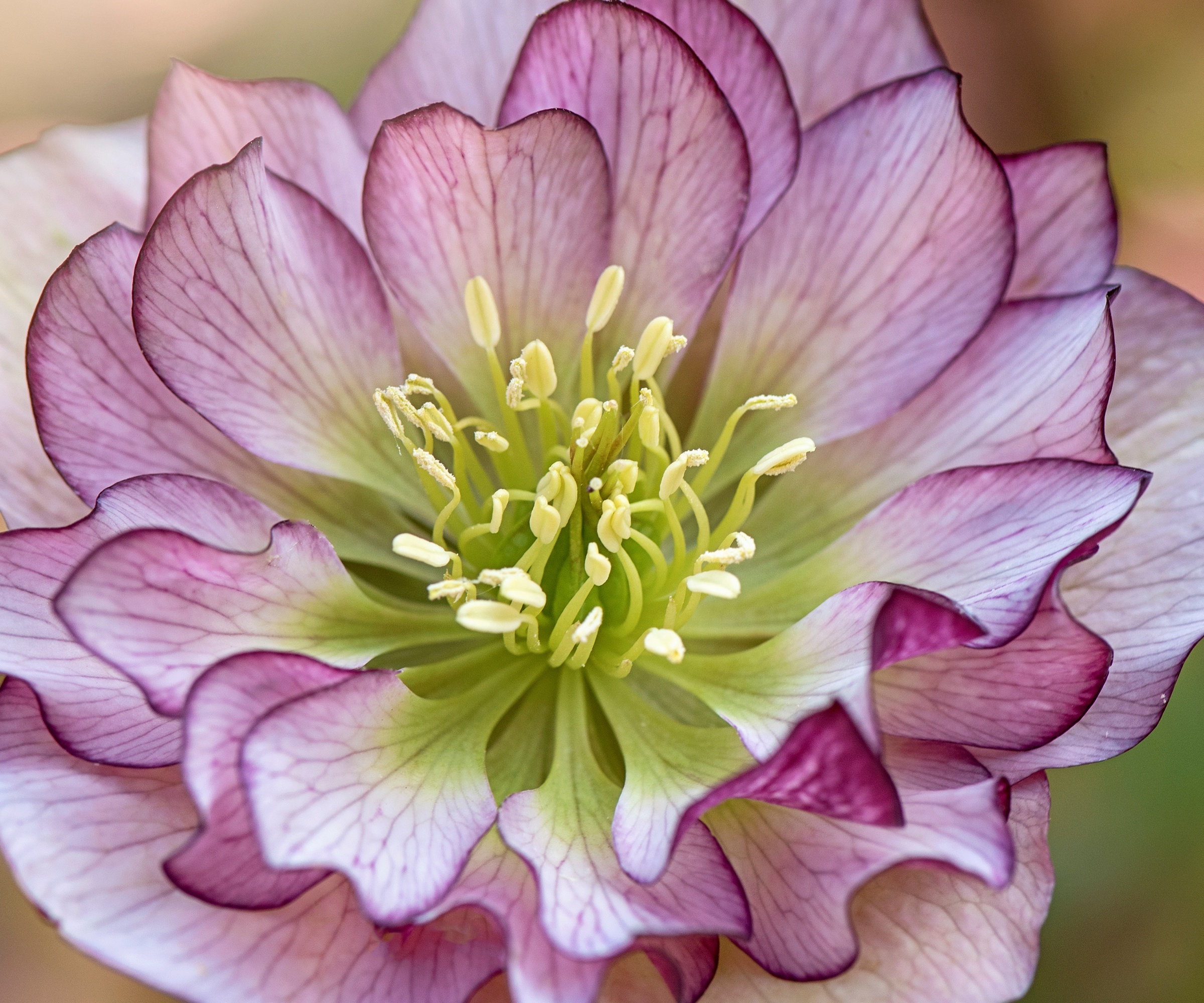
Hellebores, which are also known as Christmas or Lenten roses, are a feast for the eyes. They come in a myriad shades, from the deepest burgundy to purest white, and many cultivars are double-bloomed.
Hellebores flower from mid-winter to early spring and do well in pots. They like rich, free-draining potting soil and do best in dappled shade.
They are hardy in zones 3-9.
FAQs
What sort of pot should I use for winter flowering plants?
It depends on how cold the winters get where you live. Terracotta always looks smart, but can be prone to cracking in frosty conditions - even so-called ‘frost proof’ terracotta containers aren’t always 100% guaranteed.
More reliable options for winter planting include stone, fibreglass, wood and plastic - many modern plastic pots are excellent dupes for other materials.
How do I protect my pots from extreme cold in winter?
Plants in containers are more vulnerable to freezing weather than those in borders because potting soil freezes faster than garden soil. This can cause the plants to freeze to death, and when the thaw comes, waterlogged potting soil can also drown them when excess moisture forces oxygen from the roots. There is also the added danger that pots will crack open as frozen compost expands.
You can protect pots and plants by wrapping them in fleece such as Dewitt Supreme freeze blanket from Amazon when very cold conditions are forecast. If practical, cluster your pots together against a sheltering wall or move them into a frost-free greenhouse or porch. Always make sure containers are raised off the ground so excess rainwater and snowmelt can escape.
Do I need to feed winter flowers in pots?
Many proprietary container potting soils, such as Miracle-Gro potting mix from Amazon, come with fertilizer already added, and if I am using multipurpose compost I always add granular fertilizer at the recommended amount to give plants an initial feed.
This should feed your plants for 4-6 weeks. If they are still growing and flowering after this time, feed them fortnightly with a liquid tomato fertilizer like Farmer's Secret tomato booster, available from Amazon to promote more flowers.
Flowering winter containers are a delightful way of adding pops of color and interest to the seasonal garden. Place them on your front porch, maybe with a few fairy lights, to give your Thanksgiving and Christmas guests a bright and fragrant welcome.







